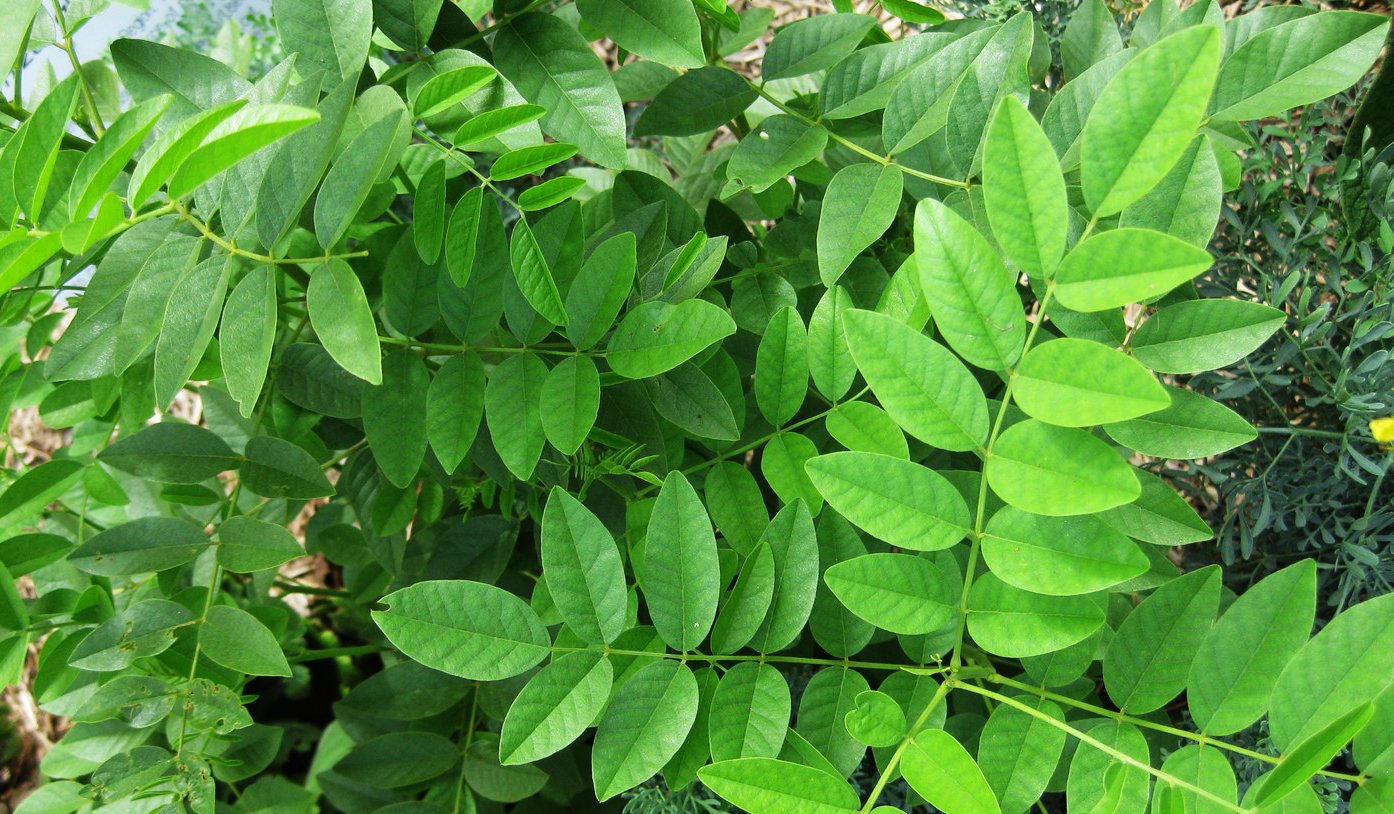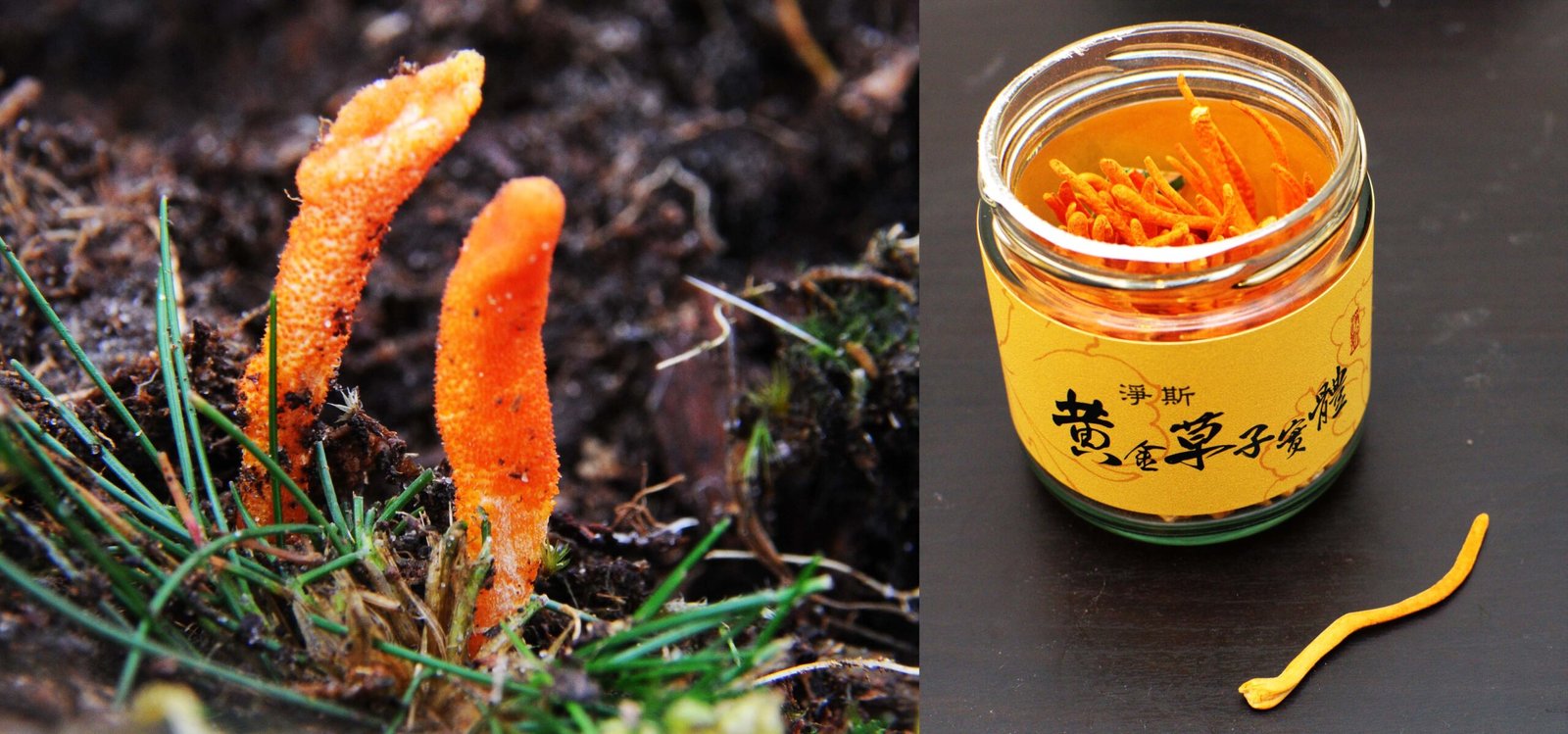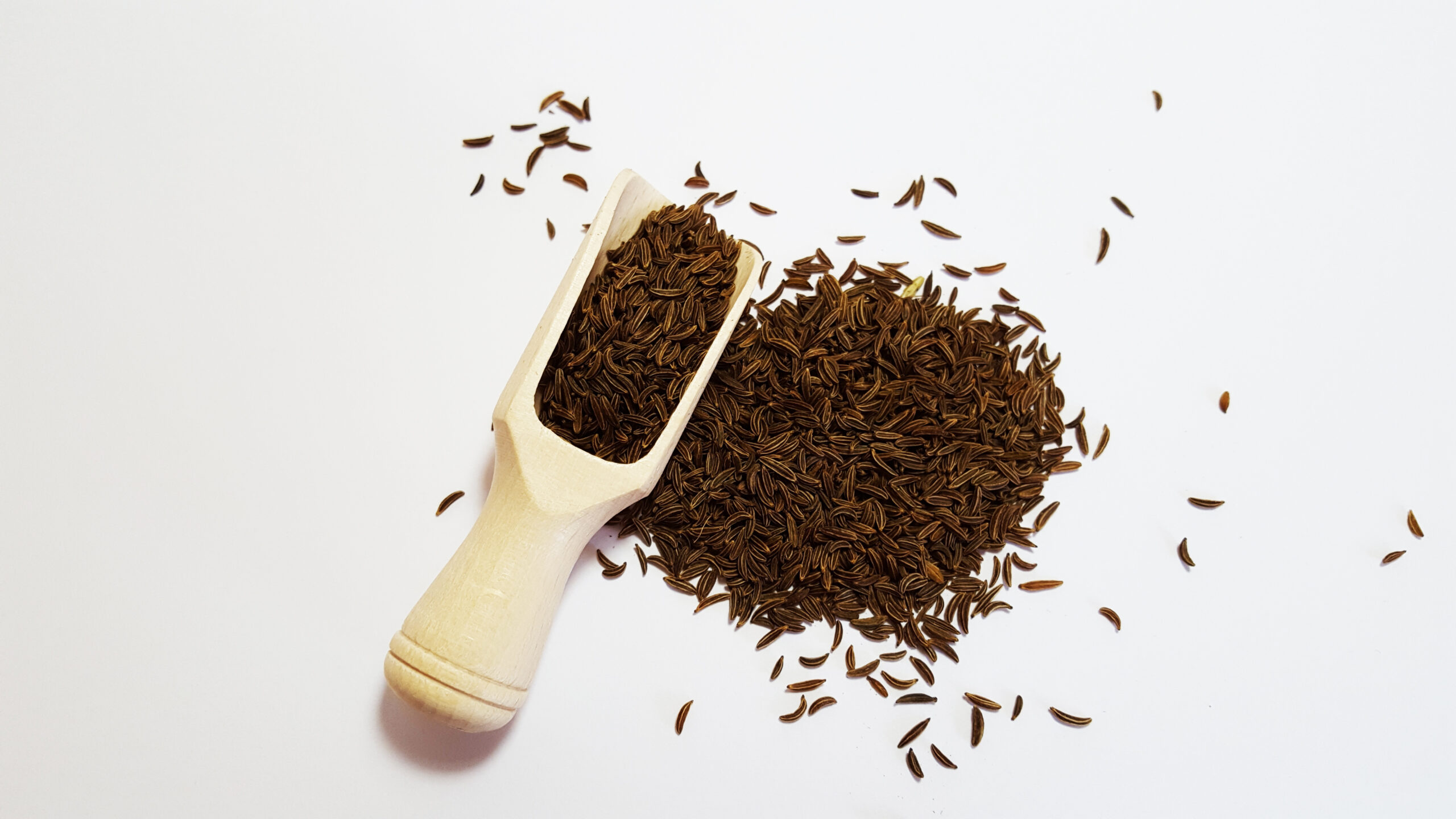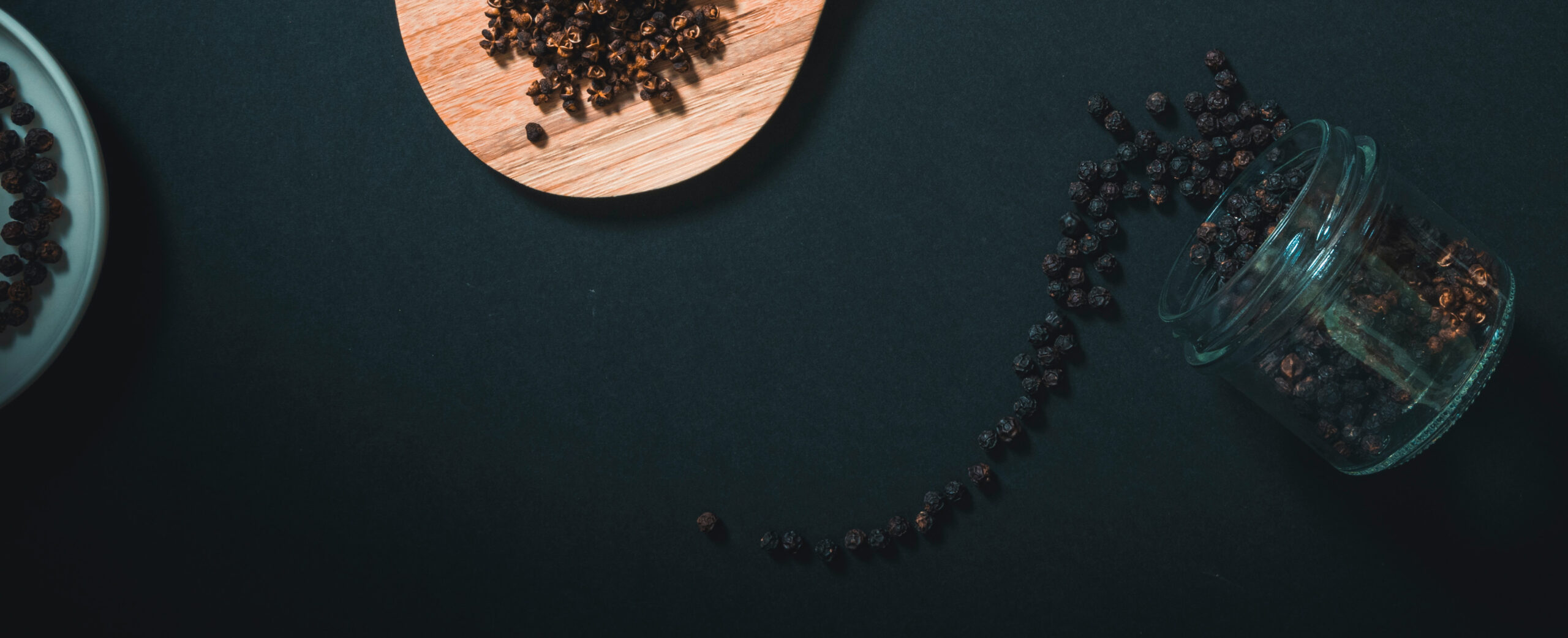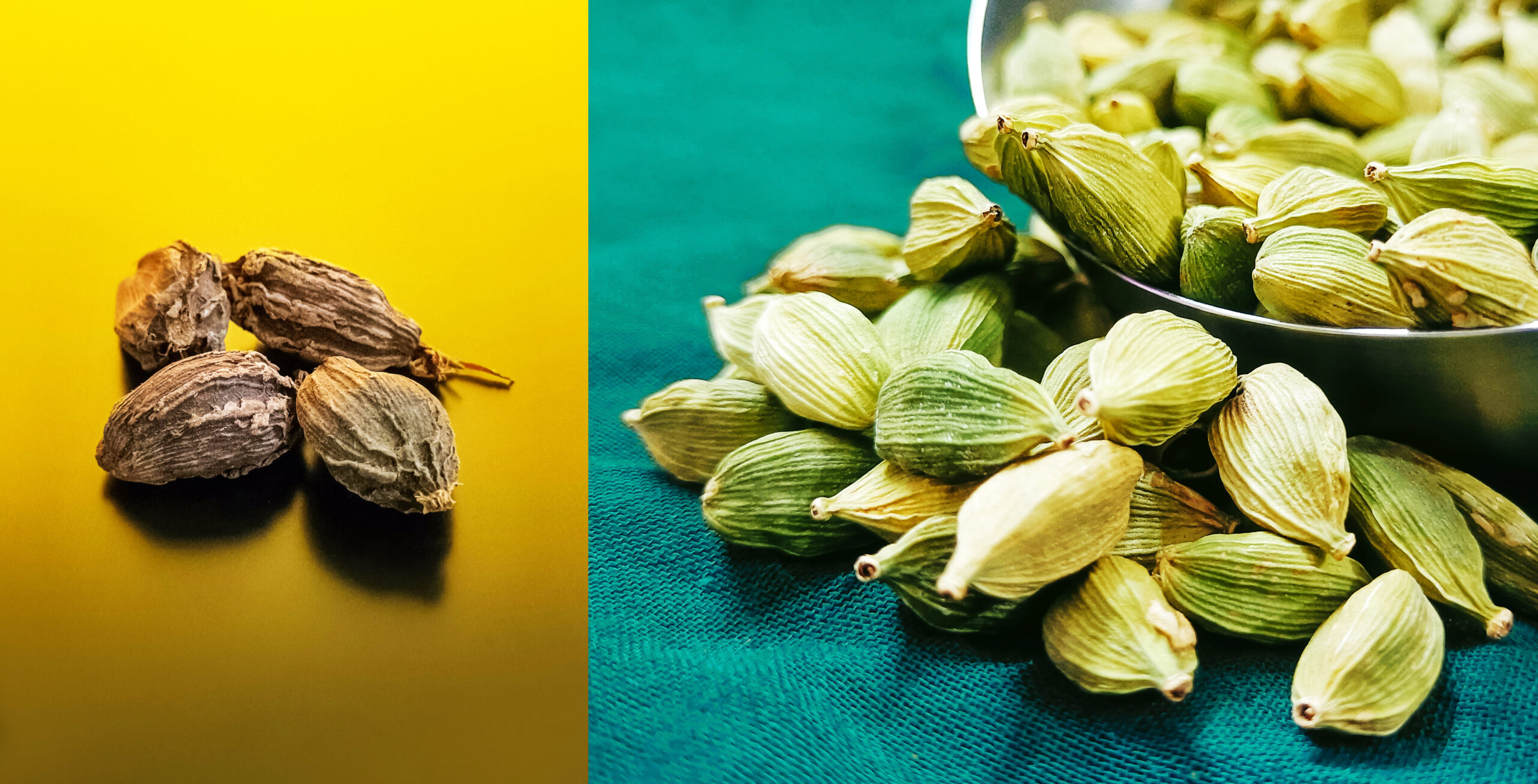Premature ejaculation (PE) is a common sexual dysfunction in men that is characterized by ejaculation that occurs sooner than desired, either before or shortly after penetration, causing distress and frustration to both sexual partners. There are two main types of premature ejaculation: primary (lifelong) and secondary (acquired). Primary PE is characterized by problems from the time of the first sexual experience. Secondary PE is where a man has had an period of normal sexual function, but then begins to experience premature ejaculation.
The exact cause of PE isn’t well understood. While it was once thought to be only psychological, modern research suggests that premature ejaculation is more complicated and involves a complex interaction of psychological and biological factors.
Psychological causes may include early sexual experiences, sexual abuse, poor body image, depression, and worry over premature ejaculation. Biological causes might include abnormal hormone levels, abnormal levels of neurotransmitters, inflammation and infection of the prostate or urethra, and inherited traits.
PE can cause significant distress and impact quality of life. It may lead to avoidance of sexual intimacy, reduced self-confidence, relationship problems, and even anxiety and depression. Additionally, men with PE often report feeling a lack of control over their sexual performance, which can further exacerbate these feelings.
In this comprehensive review, we aim to explore various dimensions pertaining to premature ejaculation, encompassing both psychological and physiological causal factors, as well as discussing potential treatment strategies. The structure of this article is as follows:
Table of Contents
Understanding the Mechanism of Ejaculation
Ejaculation is the process by which semen is ejected from a male’s body. It’s typically associated with sexual climax (orgasm), but an orgasm and ejaculation can occur separately from one another.
The ejaculation process involves two phases: emission and expulsion.
Emission Phase: This is when sperm moves from the testicles and fluid from the prostate gland and seminal vesicles combine to form semen. This mix is pushed into the urethra.
Expulsion Phase: Muscles at the base of the penis contract, forcing semen out of the penis (through the urethra). This is usually accompanied by a sensation of pleasure or orgasm (The Cleveland Clinic, 2019).
The process of ejaculation is controlled by the autonomic nervous system—the same part of the nervous system that controls heart rate, digestion, and other bodily functions. Sexual arousal stimulates a reflex action in the spinal cord that leads to ejaculation (NHS UK, 2017).
Psychogenic Factors Contributing to Premature Ejaculation
The mental state or psychological factors play a significant role in sexual performance, including ejaculation. Sexual responses, including arousal and the timing of ejaculation, are mediated by the brain and various psychological factors can influence this process.
Stress, anxiety, and emotional issues can influence ejaculation. Performance anxiety, or worry about sexual performance, is particularly likely to cause or exacerbate premature ejaculation. Men who are anxious about obtaining or maintaining their erection during sexual intercourse may form a pattern of rushing to ejaculate, which can be difficult to change (Rowland D, et al., 2015).
Depression and other mental health disorders can also affect ejaculation, as can stress related to work, finances, or other personal issues. Relationship problems, such as poor communication or conflicts, can also contribute to premature ejaculation (Mayo Clinic, 2021).
In contrast, positive mental states, like feeling relaxed and focused, can enhance sexual performance and delay ejaculation. This is why various therapeutic approaches to premature ejaculation involve psychological interventions, such as psychosexual therapy, cognitive-behavioral therapy, and mindfulness-based therapies. These approaches aim to help men reduce anxiety, increase body awareness, or change harmful sexual patterns (NHS UK, 2018).
Psychological factors can significantly influence sexual function, including ejaculation. Here are some psychological causes that could contribute to premature ejaculation:
- Performance Anxiety: This is a common issue where men worry about their sexual performance. This anxiety can create a cycle of tension and distraction, making the individual rush through sexual encounters, which can lead to premature ejaculation (Rowland D, et al., 2015).
- Early Sexual Experiences: Certain early experiences can establish a pattern that can be difficult to change later in life. This could include situations such as rushed sexual encounters where there was a fear of being discovered, or feelings of guilt that increase the tendency to rush through sexual encounters (Perelman MA, 2005).
- Depression and Other Mental Health Problems: Depression can alter the body’s biochemistry and hormone balance, potentially impacting control over ejaculation. Similarly, other mental health disorders, such as anxiety disorders, can affect ejaculation (Hartmann U, et al., 2005).
- Stress: Stress related to work, finances, or other personal issues can distract an individual during sexual activity and may contribute to premature ejaculation (McCabe MP, et al., 2010).
- Relationship Problems: If a man has had satisfying sexual relationships with other partners in which premature ejaculation happened infrequently or not at all, it’s possible that interpersonal issues between the man and his current partner could be contributing to the problem (Rowland D, et al., 2015).
Given the significant impact of psychological factors on premature ejaculation, treatments often involve psychological therapies, including cognitive-behavioral therapy, psychosexual therapy, and mindfulness-based therapies.
Evaluating PE Through Various Psychological Frameworks
An Evolutionary Approach
From an evolutionary perspective, premature ejaculation (PE) might be considered as not a dysfunction, but rather a trait that has been preserved through natural selection.
Sperm Competition Theory: The sperm competition theory suggests that in species where females mate with multiple males, the males evolve to ejaculate quickly to maximize their chances of fathering offspring. Under this theory, human males might have evolved to ejaculate quickly to compete effectively against other males’ sperm (Baker & Bellis, 1993).
Reproductive Fitness: Early ejaculation might have had benefits for reproductive fitness in our evolutionary past. In environments with high predation or competition, a short intercourse duration would minimize the risk of being interrupted by predators or rival males. Therefore, men who ejaculated quickly might have had more chances to pass on their genes (Pound, 2002).
Genetic Factors: There is evidence that PE may have a genetic component, suggesting that it is influenced by biological factors that have been passed down through generations. However, the specific genes involved in PE have not been clearly identified (Jern et al., 2007).
The Neurological Perspective
Neurologically, premature ejaculation (PE) is often linked to the functioning of serotonin (5-HT), a neurotransmitter that plays a significant role in ejaculatory control. Abnormalities in serotonin levels and serotonin receptor functionality have been associated with PE.
Serotonin Levels: Serotonin is a neurotransmitter that contributes to feelings of well-being and happiness. In the context of sexual function, serotonin is involved in delaying ejaculation. Low levels of serotonin in certain areas of the brain could lead to quicker ejaculation (Waldinger, 2005). Pharmacological treatments for PE, such as selective serotonin reuptake inhibitors (SSRIs), work by increasing serotonin levels in the brain and/or enhancing the activity of the 5-HT2C receptor, thereby delaying ejaculation.
Serotonin Receptors: There are several types of serotonin receptors, but the 5-HT1A and 5-HT2C receptors are the most relevant for ejaculatory control. The 5-HT1A receptor accelerates ejaculation, while the 5-HT2C receptor delays it. The balance between these two types of receptors is thought to regulate ejaculation timing (Hillegaart & Ahlenius, 1998).
Ejaculatory Reflex: Ejaculation is controlled by a reflex arc that involves the brain and the spinal cord. This reflex can be triggered by a certain level of stimulation, and its sensitivity can be affected by neurological factors. Some men may have an inherently lower ejaculatory threshold, leading to PE (Jannini et al., 2005).
The Psychoanalytical Perspective
Psychoanalytic theory, originating from the work of Sigmund Freud, considers premature ejaculation (PE) as a symptom that might stem from unresolved childhood conflicts, fears, or anxieties. Although psychoanalytic theory has been largely supplanted by other therapeutic models in the treatment of sexual dysfunctions like PE, it has significantly influenced our understanding of these conditions.
Unresolved Oedipal Complex: Freud’s psychoanalytic theory suggests that the Oedipus complex—a child’s feelings of desire for the opposite-sex parent and jealousy and competition with the same-sex parent—may play a role. A man might ejaculate quickly due to subconscious feelings of guilt or anxiety stemming from this unresolved conflict (Freud, 1923).
Unconscious Guilt or Fear: Other unconscious fears or guilt could also contribute to PE, including fear of causing harm to the partner or guilt associated with sexual pleasure. From a psychoanalytic perspective, these deep-seated emotions may manifest as PE as a way to avoid full sexual expression (Apfelbaum, 1989).
Relationship Issues: PE can sometimes be seen as an expression of unresolved relationship issues. This could be a passive-aggressive way of expressing anger or frustration, or it could be due to fear of intimacy (Perelman, 2005).
Behavioral Psychology’s Interpretation
Behavioral psychology focuses on observable behaviors and their modification. When applied to premature ejaculation (PE), behavioral psychologists emphasize the learned behaviors that might contribute to the condition and how they can be unlearned or modified.
Conditioned Response: Men may develop PE as a result of early sexual experiences in which quick ejaculation was advantageous, such as hurried masturbation or fear of being caught during sexual activity. This conditioning can lead to a habit of quick ejaculation, even when the circumstances no longer require it (Strassberg et al., 1990).
Performance Anxiety: PE may also be perpetuated by a cycle of anxiety. Men may worry about ejaculating too quickly, which can lead to increased arousal and, ironically, quicker ejaculation. This, in turn, reinforces the anxiety and maintains the cycle (Barlow, 1986).
Reduced Sexual Awareness: Some men with PE may have reduced awareness of their level of sexual excitement and may not recognize their approaching ejaculation until it’s too late to control it. This lack of awareness could be due to general inattentiveness or a habit of distraction during sexual activity (Schover et al., 1982).
The Cognitive Perspective
Cognitive psychology explores how people perceive, think, remember, and learn, and its principles can be applied to understanding and treating premature ejaculation (PE). The cognitive perspective focuses on the thoughts, beliefs, and attitudes that might contribute to PE. Here’s how cognitive psychology explains premature ejaculation:
Negative Sexual Cognitions: Men with PE may hold negative beliefs about their sexual performance, like expecting to ejaculate quickly, fearing their partner’s disappointment, or doubting their ability to control their arousal. These negative thoughts can increase anxiety, which can, in turn, exacerbate PE (Cheryl A. Renaud, 2001).
Catastrophic Thinking: Catastrophic thinking refers to the tendency to imagine the worst possible outcome and overestimate its likelihood. Men with PE may catastrophize the consequences of ejaculating quickly, which increases their anxiety and can make PE more likely (Mccabe, 2005).
Selective Attention: Men with PE may selectively focus on their anxiety, the sensation of their impending ejaculation, or their partner’s perceived disappointment. This selective attention can distract them from other pleasurable aspects of sexual activity and make it harder to control their arousal (Chris G. McMahon, 2016).
Anxiety Disorders and Their Role in Premature Ejaculation
Anxiety, particularly performance anxiety, has been postulated as a potential contributing factor to premature ejaculation (PE). It’s important to note that not all cases of PE are caused by anxiety, and many other factors can be involved, such as biological or other psychological causes.
Here’s how anxiety might contribute to PE:
Sympathetic Nervous System Activation: The body’s “fight or flight” response, triggered by anxiety, involves the activation of the sympathetic nervous system. This can result in physiological changes, including increased heart rate and blood pressure. It’s postulated that this heightened state of arousal can make some men more susceptible to PE (Chris G. McMahon, 2016).
Focus on Self-Performance: Anxiety, especially performance anxiety, often involves a heightened focus on one’s own performance and fears of not measuring up to expectations. This kind of self-monitoring can detract from enjoying the sexual experience and can increase the speed of ejaculation (Barlow, D. H., 1986).
Avoidance Behavior and Sensitization: Men who experience PE might develop anxiety over the condition itself, worrying that they will ejaculate prematurely in future sexual encounters. This can create a negative feedback loop, where anxiety about PE leads to more PE, and so on (Rowland, D., 2007).
Hormonal Changes: Chronic anxiety can lead to hormonal imbalances, including the production of stress hormones like cortisol, which might have a role in PE (Mehmet Gokhan Culha, 2019).
The Interrelationship Between Depression and Premature Ejaculation
Depressive disorders and premature ejaculation (PE) can be interconnected in various ways. However, the exact mechanisms linking the two remain a topic of research. Here’s an overview of the potential connections between depressive disorders and PE:
Neurochemical Imbalance: Serotonin, a neurotransmitter associated with mood regulation, has been implicated in both depression and PE. Reduced levels of serotonin in specific areas of the brain have been associated with depression, and its role in ejaculatory control is recognized (Alka Aggarwal, 2017).
Reduced Sexual Desire and Sensitivity: Depression can lead to reduced sexual desire, which might be associated with reduced penile sensitivity. This reduced sensitivity can paradoxically contribute to PE in some individuals (Marcel D. Waldinger, 2006).
Medication Side Effects: Selective serotonin reuptake inhibitors (SSRIs) are commonly prescribed to treat depression. One of the side effects of SSRIs is delayed ejaculation, but in some cases, the alteration in sexual function might result in PE, especially upon initiation or discontinuation of the medication (David E Adson, 2003).
Psychological Factors: The negative thought patterns and decreased self-esteem associated with depression might exacerbate performance anxiety in the bedroom, leading to PE (Marcel D Waldinger, 2008).
Physiological Impact: Chronic depression can lead to alterations in hormonal levels and autonomic nervous system activity, which might contribute to PE (Yue Xia, 2016).
Traits and Timing: How Personality Types Might Influence Premature Ejaculation
The relationship between personality types and premature ejaculation (PE) is an area of ongoing research. However, there is some evidence that certain personality traits might be associated with PE. Let’s explore some of these associations:
Neuroticism: Men with higher neuroticism scores, a personality trait characterized by emotional instability, anxiety, moodiness, and fear, might be more prone to PE. This is thought to be related to heightened anxiety and the inability to manage stress effectively (Brody, S. & Weiss, P. 2014).
Trait Anxiety: This refers to a stable tendency to attend to, experience, and report negative emotions such as fears, worries, and anxiety across many situations. Men with higher trait anxiety may be more likely to experience PE, possibly due to performance anxiety and increased sympathetic nervous system activity (Giovanni Corona, 2008).
Insecure Attachment Styles: Some studies have suggested that men with insecure attachment styles (anxious or avoidant) may be more likely to experience PE, possibly due to heightened anxiety and interpersonal challenges in intimate settings (Brody, S. & Weiss, P. 2014).
Beyond Behavior: The Interplay Between Personality Disorders and Premature Ejaculation
Premature ejaculation (PE) can be influenced by various factors, including psychological ones. While personality traits and certain personality disorders might be associated with PE, it’s essential to note that such associations do not mean causation. That is, having a personality disorder doesn’t necessarily cause PE, but there might be a higher prevalence of PE among those with certain personality disorders.
Here are some findings:
Obsessive-Compulsive Personality Disorder (OCPD): Some studies have found that men with PE are more likely to show traits consistent with OCPD, which is characterized by perfectionism, a high need for control, and an obsessive focus on rules and orderliness (Figueira, I., 2001).
Borderline Personality Disorder: Men with borderline personality disorder, which is characterized by mood instability, poor self-image, and difficulties in interpersonal relationships, might be at an increased risk for PE, possibly due to heightened emotional reactivity and interpersonal difficulties (Alberto Collazzoni, 2017).
Avoidant Personality Disorder: This disorder, characterized by feelings of inadequacy and sensitivity to criticism, might be linked to PE due to heightened performance anxiety and fear of negative evaluation during intimate encounters (Jean Tignol, 2001).
〉〉 Unveiling the Intricacies: Stress and Premature Ejaculation 〈〈

“Stress responses can deeply influence sexual functions.”
This section is dedicated to an in-depth exploration of the intersection between psychology and physiology within the context of premature ejaculation (PE). Drawing upon the latest empirical evidence, this comprehensive review elucidates the fundamental role of behavioral responses, particularly the innate fight or flight mechanism, in the onset and persistence of PE. It illuminates how these deeply entrenched stress responses, shaped by millions of years of evolution, can trigger a cascade of hormonal changes that interfere with sexual function and, underscores the importance of understanding and addressing these behavioral aspects, often intertwined with psychological factors like anxiety and depression, to provide a more integrative and effective approach to managing PE.
As organisms evolved, they have been wired to respond to stress in two primary manners, both deeply rooted in our survival instincts: fight or flight. When we perceive a situation as uncontrollable or overwhelming, our physiological stress response system is activated, compelling us to either confront the situation head-on (“fight”) or evade the perceived threat (“flight”) (APA, 2018).
The “fight” response is an impulsive reaction that seeks to counter the situation, be it by means of a thoughtful strategy or a hasty decision. Conversely, the “flight” response propels us to distance ourselves from the threat, regardless of whether it is a conscious or subconscious decision. Despite the seeming dichotomy, both responses operate largely outside our conscious control as they are instinctual reactions borne from our evolutionary history (Harvard Health Publishing, 2020).
In the context of male sexual encounters, this fight or flight mechanism may be elicited when the situation is perceived as excessively stressful. The “flight” response may manifest as diminished desire, erectile dysfunction and difficulties with ejaculation or premature ejaculation – a psychological facet of this disorder.
Stress and anxiety can be relentless assailants that keep the body on high alert, prompting a fight or flight response. In a bid to safeguard us from the perceived threat, the brain releases a surge of adrenaline and cortisol. These hormones heighten sensory perception and quicken reflexes, enabling us to cope with threatening situations (Christopher F. Sharpley, 2009). However, when applied to a sexual scenario under duress, such as performance anxiety during intercourse, this augmented sensitivity and swift reflex response could lead to early or involuntary ejaculation.
Normally, once the perceived threat dissipates, the sympathetic nervous system restores calm. However, individuals suffering from chronic anxiety may not experience this relaxation phase. The persistent flood of stress hormones can cause the brain to release even more of these chemicals, escalating the overall anxiety level. If this becomes a recurring event, the baseline level of anxiety may increase, leading to a transition from mild to moderate anxiety. This heightened state of anxiety can generate a constant state of nervousness and agitation (R Hoehn-Saric, 1988).
Such chronic stress, when coupled with concerns over premature ejaculation (PE) or existing depression, could lead to an excessive nervous state, heightened sensitivity, and quickened reflexes that might induce premature ejaculation. As the individual attempts to control the situation, the resulting anxiety may exacerbate the issue, culminating in a vicious cycle of premature ejaculation. A few instances of such stressful encounters can condition the mind for early ejaculation, trapping the individual in a vicious cycle that progressively worsens the condition (El-Hamd M. A., 2019 – Kaplan H. S., 1974)
Many psychotherapists advocate for a shift in perspective – viewing PE as a non-issue. The more attention and worry devoted to it, the more complicated the situation becomes. In this context, the support and understanding of a partner play a crucial role. A man who loves his partner will naturally care for her satisfaction during intimacy. If he feels incapable of providing this, feelings of guilt may arise. Should his partner’s response be negative, it could exacerbate his insecurities, guilt, and potentially precipitate anxiety and depressive episodes, inflicting significant harm to his overall health and wellness.
The Physiological Factors Contributing to Premature Ejaculation
While psychological issues are commonly associated with premature ejaculation, physiological or biological factors can also play a role. Some potential physiological causes include:
Neurobiological factors: Neurotransmitters are the chemicals that communicate messages between nerve cells. Disruption in the activity of the neurotransmitter serotonin (5-HT) in the brain is likely to be involved in premature ejaculation. Specifically, low levels of serotonin in certain areas of the brain may lead to premature ejaculation (Waldinger MD, et al., 2002).
Hormonal Problems: Hormones regulate many of the body’s functions, including sexual function. Abnormal hormone levels, such as thyroid hormones, may be involved in premature ejaculation, although this is still somewhat debated in the scientific community (Corona G, et al., 2012).
Erectile Dysfunction (ED): Men who are anxious about obtaining or maintaining an erection during sexual intercourse may form a pattern of rushing to ejaculate, leading to premature ejaculation (Rowland DL, et al., 2004).
Prostatitis and Urethritis: Inflammation of the prostate gland (prostatitis) or the tube that carries urine and semen out of the body (urethritis) can cause a number of sexual problems, including premature ejaculation (Chris G. McMahon, et al., 2016).
Genetic Factors: Some evidence suggests that certain men may be more prone to premature ejaculation due to their genetic makeup (Jern P, et al., 2009).
Gut Health Issues
The connection between gut health and premature ejaculation (PE) is an area of emerging research and the mechanisms are not fully understood. However, some research indicates that gut health may influence sexual function through the “gut-brain axis.”
The gut-brain axis refers to the bidirectional communication between the gut and the brain, which occurs through various pathways that include the immune system, the vagus nerve, and gut microbiota (the community of microorganisms living in the gut). Dysregulation in this axis has been implicated in several health conditions, including mental health disorders and chronic pain syndromes.
Chronic Prostatitis/Chronic Pelvic Pain Syndrome (CP/CPPS): Some men with PE also suffer from CP/CPPS, a condition characterized by pain in the pelvic area, difficulties urinating, and sexual dysfunction. CP/CPPS has been associated with gut health problems, including irritable bowel syndrome (IBS). The shared symptoms between CP/CPPS and IBS suggest a possible common pathophysiology, which may involve alterations in the gut microbiota and inflammation (Magistro et al., 2016).
Serotonin and Gut Health: Serotonin is a neurotransmitter that is synthesized primarily in the gut and plays a key role in regulating gut motility. It also has a crucial role in regulating mood, anxiety, and sexual desire, which are all factors that can influence PE. An imbalance in serotonin levels, possibly related to gut health, could potentially contribute to PE (O’Mahony et al., 2015).
Stress and Anxiety: Gut health can also influence stress and anxiety levels through the gut-brain axis. High levels of stress and anxiety can exacerbate PE. Gut microbiota can influence the body’s stress response, and alterations in the gut microbiota have been associated with increased anxiety behavior (Clarke et al., 2013).
Urological Health Conditions
Several urological health issues have been associated with premature ejaculation (PE), although the nature of these relationships is often complex and not fully understood. Here are some examples:
Prostatitis: Chronic prostatitis, characterized by inflammation of the prostate gland, has been linked with PE. The discomfort and pain associated with prostatitis can lead to PE, potentially due to heightened pelvic sensitivity or anxiety related to the condition (Lee et al., 2015).
Erectile Dysfunction (ED): PE and ED often co-occur, though the relationship between the two is complex. Some men with ED may develop PE as a conditioned response, attempting to ejaculate before losing their erection. Conversely, the stress and anxiety associated with PE can also contribute to ED (Corona et al., 2022).
Lower Urinary Tract Symptoms (LUTS): Studies have shown that men with LUTS, which include symptoms like increased frequency and urgency of urination, are more likely to experience PE. The exact link is unclear, but it could be related to increased pelvic muscle tension or changes in neurotransmitter activity (Sihotang, et al., 2021).
Urethritis: Inflammation of the urethra (urethritis) can lead to increased penile sensitivity, which may contribute to PE. This is often caused by sexually transmitted infections, such as gonorrhea or chlamydia (Chris G. McMahon, et al., 2016).
Poor Sleep Quality
The link between sleep quality and premature ejaculation (PE) can be complex and multi-faceted. While scientific research on this particular topic is not extensive, a few studies have suggested potential connections.
Sleep has a significant effect on hormone production, including sex hormones, and this may influence sexual function. Chronic sleep problems, such as insomnia or sleep apnea, may disrupt these hormonal balances, potentially contributing to sexual dysfunctions, including PE (Wei Zhang, et al., 2022).
Moreover, sleep deprivation is associated with heightened stress and anxiety levels, which have been linked to PE. Poor sleep can also lead to fatigue, which may decrease sexual desire and potentially contribute to PE (Andersen et al., 2011, NIH-NLM, 2006)
Additionally, a study published in the Journal of Sexual Medicine found that men with lifelong premature ejaculation were more likely to have poor sleep quality and nocturnal symptoms compared to men without PE (Wei Zhang, et al., 2022). The researchers suggested that the findings may be due to heightened sympathetic nervous system activity, as both PE and sleep disturbances are associated with increased sympathetic tone.
Bad Lifestyle Habits and PE
Bad lifestyle habits can significantly impact overall health, including sexual health and function. Several bad habits have been associated with premature ejaculation (PE), either directly or indirectly.
Smoking: Nicotine, the addictive substance in tobacco, can disrupt blood flow by constricting blood vessels. This can negatively affect sexual health, potentially contributing to conditions such as erectile dysfunction and PE (Kovac et al., 2015).
Alcohol Consumption: While moderate alcohol consumption may not directly cause PE, excessive and chronic alcohol use can have several negative effects on sexual health. Alcohol can interfere with the normal balance of sex hormones, lead to nerve damage, and contribute to psychological issues like stress and anxiety, which can, in turn, lead to PE (Peugh & Belenko, 2001).
Poor Diet: A diet high in processed foods, saturated and trans fats can contribute to obesity and related health conditions such as diabetes and heart disease. These conditions can have a negative impact on sexual health, potentially leading to PE (Kaplan et al., 2006).
Lack of Exercise: Regular physical activity is important for maintaining cardiovascular health, which is essential for sexual function. A sedentary lifestyle can lead to poor circulatory health, obesity, and other health conditions that may contribute to PE (Laumann et al., 2005).
Drug Abuse: The misuse of certain drugs can impact sexual function and potentially contribute to PE. For instance, amphetamines and certain other recreational drugs can result in sexual dysfunction (Rawson et al., 2002).
Inadequate Sleep: Chronic sleep deprivation can disrupt hormonal balances, cause stress, and lead to fatigue, which may decrease sexual desire and contribute to PE (Wei Zhang, et al., 2022).
Treatment Options for Premature Ejaculation
There are several treatment options for premature ejaculation, often used in combination for the best results. They fall into three main categories: behavioral techniques, topical anesthetics, and medications.
Behavioral Techniques: These involve sexual exercises that can help to improve ejaculatory control.
The “start-stop” technique: This involves sexual stimulation until the man recognizes that he is about to ejaculate. At this point, the stimulation is stopped for about 30 seconds and then started again once ejaculation is no longer imminent. The process is repeated 3-4 times before allowing ejaculation to occur (Kazım Doğan, 2023).
The “squeeze” technique: This technique involves sexual stimulation until the man recognizes he is about to ejaculate. At this point, the stimulation stops and the tip of the penis is squeezed for several seconds. Stimulation can then be resumed and the process repeated as necessary (Nicholas Gillman, 2019).
Topical Anesthetics: These are creams or sprays that contain a numbing agent, such as lidocaine or prilocaine, which can delay ejaculation by reducing sensation. These products are applied to the penis shortly before sex to reduce sensation and help delay ejaculation. A condom can be used to protect the partner from the numbing agent (Marrissa Martyn-St James, 2016).
Medications: Certain medications can help to delay ejaculation.
Antidepressants: Some selective serotonin reuptake inhibitors (SSRIs), such as paroxetine, sertraline or fluoxetine, are effective for delaying ejaculation. However, they may have side effects such as nausea, dry mouth, drowsiness and decreased libido (McMahon CG, 2019).
Analgesics: Some pain medications, such as Tramadol, can delay ejaculation. However, they must be used with caution due to the risk of addiction (Bayoumy I Eassa, 2013).
Phosphodiesterase-5 inhibitors: Some medications used to treat erectile dysfunction, like sildenafil (Viagra), may also help with premature ejaculation, especially if used in combination with an SSRI (McMahon CG, et al., 2006).
Cognitive Behavioral Therapy (CBT)
Cognitive-behavioral therapy (CBT) is a type of psychotherapy that aims to modify harmful thoughts, emotions, and behaviors. For the treatment of premature ejaculation (PE), CBT combines techniques that address both cognitive (thought-related) and behavioral (action-related) aspects of the condition.
Cognitive Restructuring: This involves identifying and challenging the negative or distorted beliefs and thoughts that contribute to PE. For instance, a man might catastrophize the consequences of ejaculating quickly, leading to increased anxiety and a self-fulfilling prophecy of quick ejaculation. Cognitive restructuring can help to replace these harmful thoughts with more positive, realistic ones (Althof, 2012).
Behavioral Techniques: Behavioral strategies like the “start-stop” and “squeeze” techniques are often incorporated into CBT for PE. These techniques aim to increase a man’s awareness and control of his ejaculatory reflex. With practice, a man can learn to delay ejaculation and reduce anxiety related to performance (Kazım Doğan, 2023).
Mindfulness Training: Mindfulness, which involves focusing one’s awareness on the present moment, can also be part of CBT for PE. This can help to reduce anxiety, enhance sexual awareness, and improve sexual satisfaction (María Fernanda, et al., 2023).
Relaxation Techniques: Relaxation exercises, such as deep breathing, progressive muscle relaxation, and guided imagery, can help reduce anxiety and increase overall sexual satisfaction (Anjali Mangesh Joshi, et al., 2019).
Sexual Education: This might include providing accurate information about the variability of sexual responses and debunking myths about sex and masturbation that could be contributing to PE (Ajit Avasthi, et al., 2017).
Regular Physical Activity and Workouts
Regular physical activity can have various positive effects on overall health and wellbeing, including sexual health. Research on the direct link between regular exercise and premature ejaculation (PE) is not extensive, but several indirect connections suggest that physical activity might be beneficial in managing PE.
Stress reduction: Exercise is known to reduce stress and anxiety levels, both of which have been associated with PE. Regular physical activity promotes the release of endorphins, the body’s natural mood elevators, which can help alleviate stress (Paluska & Schwenk, 2000).
Improved circulatory health: Regular exercise, particularly cardiovascular workouts, improve heart health and blood circulation. Healthy blood flow is essential for good erectile health which aids ejaculatory control (Helle Gerbild, et al., 2018).
Muscle control: Specific exercises, like Kegels or pelvic floor exercises, can strengthen the pelvic muscles, which play a crucial role in ejaculatory control. A study found that a 12-week program of pelvic floor muscle exercises combined with biofeedback and lifestyle changes was effective in treating lifelong PE (Pastore et al., 2014).
Hormonal balance: Regular physical activity helps maintain a healthy hormonal balance. Disruptions in hormones, such as serotonin and testosterone, can influence sexual function, including ejaculation (E C Caperuto, et al., 2009, Hiroshi, et al., 2016).
Improved self-confidence and body image: Regular exercise can contribute to a better body image and improved self-confidence, which can indirectly enhance sexual performance and help manage PE (Elliot Montgomery Sklar, 2015).
Common Home Remedies
While professional medical advice is essential when dealing with premature ejaculation, several home remedies or behavioral strategies can complement medical treatments or provide initial support. They involve techniques that aim to help individuals enhance their sexual performance or improve ejaculatory control. It’s worth noting that these approaches may not be effective for all men and are best used in conjunction with professional advice.
Pelvic Floor Exercises: Sometimes known as Kegel exercises, these exercises can help strengthen the muscles involved in orgasm and ejaculation. A small study conducted in 2014 found that pelvic floor exercises combined with biofeedback and advice on lifestyle changes, such as quitting smoking, losing weight, and limiting alcohol, were more beneficial than advice alone (Pastore AL, et al., 2014).
‘Stop-start’ Technique: This method involves stimulating the penis and stopping before feeling like ejaculating. Stop the stimulation for 30-60 seconds and then start again once the feeling has subsided. Repeat this process 4-5 times, stopping and resting every time ejaculation is felt to be imminent. Finally, let the ejaculation occur, so one can identify the ‘point of no-return’ (Kazım Doğan, 2023).
‘Squeeze’ Technique: Similar to the ‘stop-start’ technique, but instead of stopping stimulation, the partner places the thumb, index, and middle fingers on the underside of the penis at the base, and applies gentle pressure for about 20 seconds. Then let go and resume foreplay or stimulation. Like ‘stop-start’, the squeeze technique can help you identify and control the ‘point of no-return’ (Nicholas Gillman, 2019).
Condoms: Condoms might decrease penis sensitivity and help delay ejaculation. Some condoms are marketed as being extra-thick with a numbing agent to help reduce sensitivity and delay ejaculation (Waldinger MD, et al., 2002).
Communication and Counseling: Open communication with a partner about fears and anxieties, such as fear of performance, can alleviate mental stress. Counseling or couples’ therapy can be beneficial in these cases (Perelman MA, 2006).
Yoga and Meditation
Practicing yoga and meditation may help men manage premature ejaculation by enhancing body awareness, reducing stress, improving mood, and potentially improving sexual health and function. Yoga combines physical postures, breathing exercises, and meditation to promote physical and mental wellbeing. Here are a few yoga poses and meditation techniques that may be beneficial:
Paschimottanasana (Seated Forward Bend): This yoga posture is believed to improve endurance, help control ejaculation, and provide a soothing effect on the mind. This posture involves seated forward bends that could help strengthen the pelvic muscles (Anjali Mangesh Joshi, et al., 2019).
Pranayama (Breath Retention): This breathing exercise involves holding your breath for extended periods. This practice helps manage stress and anxiety, which are potential causes of PE. It also helps in improving focus and self-control (Anjali Mangesh Joshi, et al., 2019).
Ashwini Mudra (Horse Gesture): Ashwini mudra involves the contraction and relaxation of the anal sphincter muscles, much like Kegel exercises. Regular practice is believed to strengthen the pelvic muscles and improve control over ejaculation (Anjali Mangesh Joshi, et al., 2019).
Vajroli Mudra (Thunderbolt Attitude): This advanced technique involves the contraction of muscles in the urogenital area, which might help improve control over ejaculation. However, learning this technique requires the guidance of a qualified yoga practitioner (Anjali Mangesh Joshi, et al., 2019).
Mindfulness Meditation: Mindfulness involves focusing on the present moment non-judgmentally. In the context of sexual activity, mindfulness could involve paying attention to physical sensations, which might help men maintain control and delay ejaculation. A few studies have suggested potential benefits of mindfulness in managing PE (María Fernanda, et al., 2023).
Loving-Kindness Meditation (Metta): This form of meditation focuses on developing feelings of goodwill, kindness, and warmth towards others and oneself. It can help manage negative emotions like performance anxiety that can contribute to PE (Hofmann et al., 2011).
Nutritious Fruits and Vegetables for Managing PE
Certain fruits and vegetables are thought to help with premature ejaculation (PE), largely because of their nutritional profiles, which support overall health and potentially enhance sexual function. It should be noted that evidence supporting specific fruits and vegetables for PE is not definitive, but these foods are generally good for overall health and wellness.
Bananas: Bananas are rich in potassium and B-vitamins like riboflavin, which are necessary for testosterone production. They also contain a specific enzyme called bromelain which may help in increasing libido and regulating sex hormones (MNT, 2023).
Avocados: Avocados are rich in monounsaturated fats, vitamin B6, and folic acid. B6 helps in the production of hormones, while folic acid assists in metabolizing proteins. Both are beneficial for healthy sex drive (Fulgoni et al., 2013).
Watermelon: Watermelon contains a phytonutrient called citrulline, which the body converts to arginine, an amino acid that boosts nitric oxide levels in the body, which relaxes blood vessels in the same way a medicine like Viagra does (Cormio et al., 2011).
Spinach: Spinach is rich in magnesium, a mineral that decreases inflammation in blood vessels and increases blood flow. Increased blood flow drives blood to the extremities, which can invigorate sex drive (Mark Houston, 2011).
Garlic: Garlic contains allicin, which is thought to increase blood flow. Limited sexual stamina can be due to poor blood circulation, and improving blood flow can lead to better sexual performance (Leyla Bayan, et al., 2014).
Herbal Interventions
Herbal remedies have been used for centuries in various cultures to address a wide range of health problems, including premature ejaculation (PE). While some men may find relief with these remedies, evidence for their efficacy varies, and they’re not as thoroughly studied as more traditional PE treatments. Therefore, it’s essential to consult with a healthcare provider before starting any herbal treatment. Here are a few herbal remedies often mentioned in the context of PE:
Ashwagandha (Withania somnifera): Known as Indian ginseng, Ashwagandha has been used in Ayurvedic medicine for thousands of years. It’s known for its adaptogenic properties, meaning it helps the body cope with stress. While not studied specifically for PE, it is often recommended for sexual health concerns due to its potential to improve libido, reduce stress, and enhance stamina (Ramin Nasimi, et al., 2018).
Tribulus Terrestris: This plant, also known as puncture vine, has long been used in both Traditional Chinese Medicine and Ayurveda to enhance sexual function. Tribulus is believed to increase testosterone levels, though more research is needed to confirm its efficacy for PE (Roaiah et al., 2016).
Maca (Lepidium meyenii): This plant native to Peru is often referred to as “Peruvian ginseng” despite no relation to ginseng. It’s been used for centuries to increase stamina and combat fatigue. While more research is required, some studies suggest Maca may help with sexual dysfunction (Zenico et al., 2009).
Ginkgo Biloba: Known for its ability to enhance memory and cognitive function, Ginkgo biloba is also used for treating sexual dysfunctions like PE. The flavonoids in the herb may contribute to relaxing smooth muscle and increasing peripheral blood flow. However, more studies are required to confirm its effectiveness (Cohen and Bartlik, 1998).
Korean Red Ginseng (Panax Ginseng): Korean red ginseng is used for managing erectile dysfunction, and some believe it may help with PE. However, more research is required to establish its efficacy for this purpose (Jang et al., 2008).
Saffron: Saffron is a spice derived from the flower of Crocus sativus, which has been used traditionally for its antioxidant and anti-inflammatory properties. A study showed that topical saffron (cream) might increase the duration of erection and improve control over ejaculation. However, further research is needed to confirm these findings (Modabbernia et al., 2012).
Passionflower (Passiflora incarnata): Traditionally used for anxiety treatment, it’s thought that its anxiolytic effect might help in managing PE associated with performance anxiety, but solid clinical evidence is lacking (Akhondzadeh et al., 2001).
Conclusion
In our exploration of premature ejaculation (PE), it becomes evident that the condition is a complex interplay of numerous causal factors spanning both physiological and psychological realms. The myriad of origins, from hormonal imbalances and neurobiological factors to anxiety and relationship issues, underscores the challenge and necessity of individualized diagnosis and treatment approaches.
Equally diverse are the treatment options available. From pharmacological solutions, behavioral techniques, to psychotherapeutic interventions, each offers a unique pathway to mitigate the effects and root causes of PE. Crucially, the multifaceted nature of this condition necessitates an integrated approach, one that addresses not just the symptoms but the underlying triggers.
As we move forward in our understanding and treatment of PE, the emphasis remains on personalized care — ensuring that every individual is provided a tailored strategy that acknowledges their unique experiences and challenges, ultimately aiming for a holistic improvement in their sexual health and overall well-being.
Disclaimer: The information on this page is not intended to be a substitute for professional medical advice. Do not use this information to diagnose or treatment of men’s and women’s sexual health and general health conditions without consulting the doctor. While we review and promote nutrients, herbs, Ayurvedic medicines, and alternative therapies for men’s and women’s sexual health and general health conditions, you must consult an authorized physician before taking any of the products.




